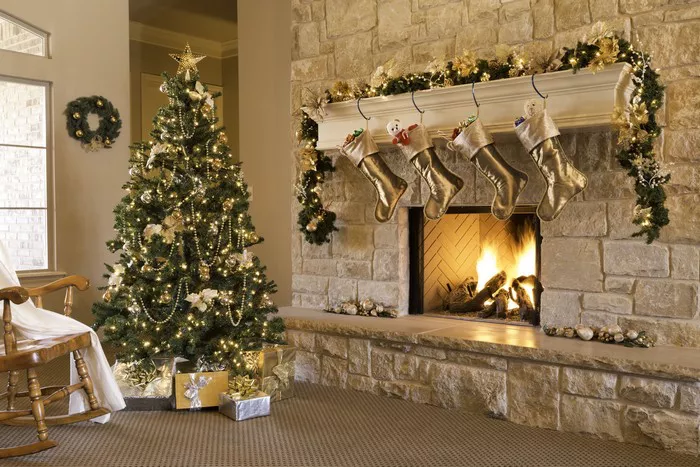The Christmas tree is a beloved and iconic symbol of the holiday season, cherished by millions around the world. While the practice of decorating trees during winter celebrations dates back centuries, the modern Christmas tree has evolved into a powerful symbol with deep cultural and religious significance. Understanding the meaning behind Christmas trees reveals not only the rich history of this tradition but also the enduring messages of hope, renewal, and unity that it represents.
Historical Roots: Pagan Origins and Christian Adaptation
The roots of the Christmas tree tradition can be traced back to ancient pagan cultures. During the winter solstice, evergreen trees symbolized everlasting life, even in the depths of winter. The use of evergreens in celebrations was common among various ancient civilizations, including the Egyptians, Romans, and Druids. These cultures believed that greenery held special powers and could ward off evil spirits.
As Christianity spread across Europe, early Christian leaders adapted existing customs to incorporate Christian themes. The tradition of the Christmas tree is often attributed to Saint Boniface, an English missionary who, in the 8th century, reportedly used a fir tree to symbolize the Holy Trinity during his mission to Germany. Over time, the Christmas tree became associated with the celebration of Christ’s birth, blending pagan and Christian symbolism.
Symbolism of the Christmas Tree
The Christmas tree is laden with symbolism that transcends religious and cultural boundaries. One of the most notable elements is its evergreen nature, representing resilience and the enduring spirit of life even in harsh conditions. The triangular shape of the tree is said to symbolize the Holy Trinity—Father, Son, and Holy Spirit—within Christian tradition.
The act of decorating the tree is also significant. Each ornament, light, and garland holds its own symbolism. Ornaments might represent cherished memories, family traditions, or aspects of nature. Lights symbolize the light of Christ and hope for the coming year. The star or angel placed atop the tree often symbolizes the Star of Bethlehem or heralds the message of peace and goodwill.
Cultural Variations and Global Appeal
While the Christmas tree has deep Christian roots, it has become a universally recognized symbol of the holiday season, embraced by diverse cultures around the world. Each culture brings its own unique traditions and interpretations to the Christmas tree.
In Germany, where the modern Christmas tree tradition is believed to have originated, decorating the tree with candles and ornaments is a cherished family event. In the United States, the Christmas tree has been intertwined with American culture since the 19th century, influenced by waves of immigration and cultural exchange.
Environmental and Sustainable Practices
In recent years, the symbolism of the Christmas tree has extended beyond its cultural and religious meanings to encompass environmental considerations. Many families opt for sustainable practices by using artificial trees or choosing locally grown, eco-friendly real trees. The emphasis on sustainability aligns with the tree’s original symbolism of renewal and continuity.
Community and Family Traditions
The Christmas tree serves as a focal point for family gatherings and community celebrations during the holiday season. Decorating the tree together is a cherished tradition that strengthens bonds and creates lasting memories. Each ornament collected over the years tells a story, reflecting the family’s journey through time.
In many communities, the lighting of a public Christmas tree marks the beginning of holiday festivities. The sight of a beautifully adorned tree in town squares or city centers evokes a sense of joy and unity among neighbors and strangers alike.
The Christmas Tree in Popular Culture
The Christmas tree has also become an enduring symbol in popular culture, featured in countless movies, songs, and works of literature. From “A Charlie Brown Christmas” to Tchaikovsky’s “The Nutcracker,” the Christmas tree is a central motif that captures the spirit of the season.
Modern Interpretations and Expressions
As society evolves, so do the interpretations of the Christmas tree. Some choose minimalist designs or unconventional materials to express their unique style while still embracing the tradition’s core symbolism. Others use the Christmas tree as a platform for artistic expression, creating elaborate displays that captivate audiences and inspire wonder.
The Future of the Christmas Tree Tradition
The Christmas tree continues to evolve while remaining a cherished symbol of hope, joy, and togetherness. As global communities navigate changing traditions and values, the Christmas tree serves as a timeless reminder of the enduring human spirit and the universal desire for peace and goodwill.
Conclusion
In conclusion, the meaning behind Christmas trees encompasses a rich tapestry of history, symbolism, and cultural significance. From its humble pagan origins to its modern-day global appeal, the Christmas tree embodies themes of resilience, unity, and hope. Whether adorned with heirloom ornaments or innovative designs, the Christmas tree remains a beloved tradition that connects generations and cultures, making the holiday season brighter and more meaningful for all who embrace it.
Related Topics:



























